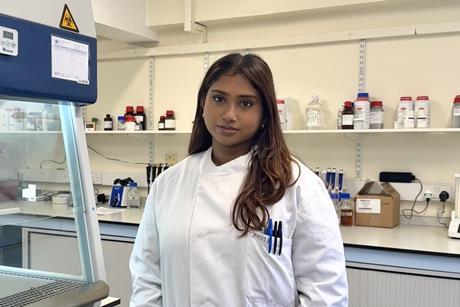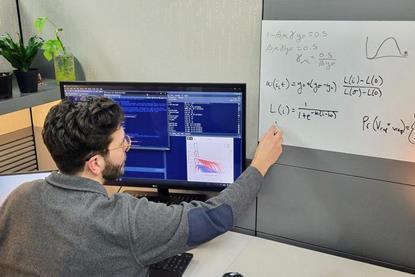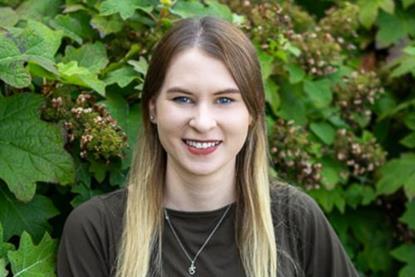Young Innovators & Early Career Research
Early career research is crucial for science, and in delivering applied microbiology to the world. This page is focused on showcasing innovations and research from early career researchers across the globe and provides a hub for the latest news, opinions, careers advice and research for early career scientists. Discover how interdisciplinary colleagues from around the world are making advancements in, and through, applied microbiology.
News
New method accelerates resistance testing in urinary tract infections
Researchers have developed two methods that allow urine samples to be tested directly for antibiotic susceptibility. Because the procedures do not require standardized bacterial suspensions, the time to result is reduced by up to 24 hours compared to conventional testing.
Read story- News
Who is more likely to get long COVID?
Scientists have identified the key genetic drivers behind long COVID, revealing why some people continue to experience debilitating symptoms long after their initial infection.
- News
Study uncovers new drug target for huge class of viruses
A study reveals how enteroviruses—including pathogens that cause polio, encephalitis, myocarditis, and the common cold—initiate replication by hijacking host-cell machinery.
- News
New method means contaminated bathing water easier to detect
A new method can provide both faster and more complete answers on whether the water is safe for swimming or not. The innovation has been successfully tested in Helsingborg, where the response time has been reduced from several days to just a few hours.
More Early Career Research
Careers
Summer studentship: Harini searches South Asian fermented foods for microbes that can tackle fruit browning
Harini Satkunarasa reports back on her AMI-sponsored summer studentship which explored South Asian fermented foods as a source of microorganisms for tyrosinase inhibition, with the wider aim of finding natural ways to decrease fruit browning in foods.
- News
Novel kirkovirus may be associated with colitis in horses
In a pilot study, researchers have found a novel kirkovirus that may be associated with colitis – and potentially small colon impactions – in horses. The study could offer a route to new therapies for horses with colitis symptoms from unknown causes.
- News
Study links gut bacteria to bloodstream infections in newborns within sub-Saharan Africa for the first time
New research has shown gut and bloodstream infections are caused by the same bacteria giving hope of better prevention and diagnosis of deadly neonatal sepsis.
- News
Unique bond identified as key to viral infection speed
Viruses are typically described as tiny, perfectly geometric shells that pack genetic material with mathematical precision, but new research reveals a deliberate imbalance in their shape that helps them infect their hosts.
- News
Researchers discover how Ebola and Marburg disrupt the gastrointestinal tract
A new study sheds light on the mechanisms behind the damage caused by Ebola (EBOV) and Marburg virus (MARV) to the gastrointenstinal tract. TIt found that both viruses are capable of infecting and replicating within human gut epithelial cells and that the viruses interfere with the cells’ ability to regulate fluid secretion, mirroring the severe symptoms observed in patients.
- News
Pandemic ‘beneath the surface’ has been quietly wiping out sea urchins around the world
Over the last four years, an unrecognized pandemic that has been wiping out sea urchins around the world has hit the Canary Islands. The consequences on marine ecosystems aren’t yet fully known, but likely profound.
- News
Study reveals promising gut-targeted therapy for C. difficile infections
Researchers have uncovered how the body’s bile acids bind to block C. diff’s most dangerous toxin. The research has informed the development of a new compound that can protect against C. diff in preclinical models, offering hope for safer, more effective treatments.
- Careers
Summer studentship: Lucy creates a synthetic microbiome to study mosquito-borne diseases at different life stages
Lucy Ella Malvern reports back on her AMI-sponsored summer studentship which investigated microbiome assembly in mosquitoes across developmental stages.
- News
Inside the gut: What our poo could tell us about our diet, gut microbes and health
Researchers have found that molecules in stool samples can accurately reflect what people eat and how their gut microbiome responds, offering a potential new tool to study nutrition and its impact on health.
- News
Deep sea microbes yield up their engineering secrets
A biomatrix of tiny tubes of protein, known as cannulae, link cells of the thermal vent-dwelling archaeon Pyrodictium abyssi together into a highly stable microbial community. A study reveals new details about the elegant design of the cannulae and their method of construction.
- News
Social lives of viruses affect antiviral resistance
Interactions among viruses can help them succeed inside their hosts or impart vulnerabilities that make them easier to treat. Scientists are learning the ways viruses mingle inside the cells they infect, as well as the consequences of their socializing.
- News
Professor named EMBO Young Investigator for work on the infant microbiome
Prof. Moran Yassour has been selected as one of the 2025 EMBO Young Investigators. She receives this prestigious recognition for her innovative research on the developing infant microbiome and its impact on pediatric health.
- News
Probiotics and prebiotics offer safer alternatives to antibiotics in animal agriculture
A new study shows how probiotics, prebiotics, and synbiotics can safely enhance growth and immunity in livestock, and balance the growth of intestinal microbes, offering practical alternatives to antibiotics.
- News
Ants signal deadly infection in altruistic self-sacrifice
Researchers have discovered that terminally ill ant brood, like infected cells, release an odor signaling their impending death and the risk they pose. This sophisticated early warning system facilitates rapid detection and removal of pathogenic infections.
- News
Point-of-care rapid tests can improve screening for latent tuberculosis
A new test shows promising results for detecting latent tuberculosis infection in resource-limited settings. Latent tuberculosis is often diagnosed using a laboratory test called QuantiFERON-TB Gold Plus - this was compared with another test, TB-Feron.
- News
New global guidelines streamline environmental microbiome research
A team of nearly 250 researchers from 28 countries has developed a new set of reporting guidelines for environmental microbiomes called STREAMS. The guidelines are organized by the structure of a scientific manuscript and help ensure that important details aren’t overlooked.
- Careers
Summer studentship: Oliver probes AMR in neonatal sepsis - and use of novel bacterial screening methods.
Oliver Spiller-Boulter, from Cardiff, reports back on his AMI-sponsored summer studentship which examined antimicrobial resistance (AMR) in neonatal sepsis and the use of novel bacterial screening methods.
- Careers
Scientific Event Travel Grant: Hannah returns with renewed motivation and new ideas
Dr Hannah Trivett, University of Birmingham, reports back from EMBL Human Microbiome Conference held in Heidelberg, Germany, where she presented her research with the support of AMI’s Scientific Event Travel Grant.
- News
Metabolites produced in the intestine play a central role in controlling obesity and diabetes
A study has identified a group of metabolites that travel from the intestine to the liver and then to the heart, where they are pumped throughout the body. These metabolites play an important role in controlling metabolic pathways in the liver and insulin sensitivity.






















